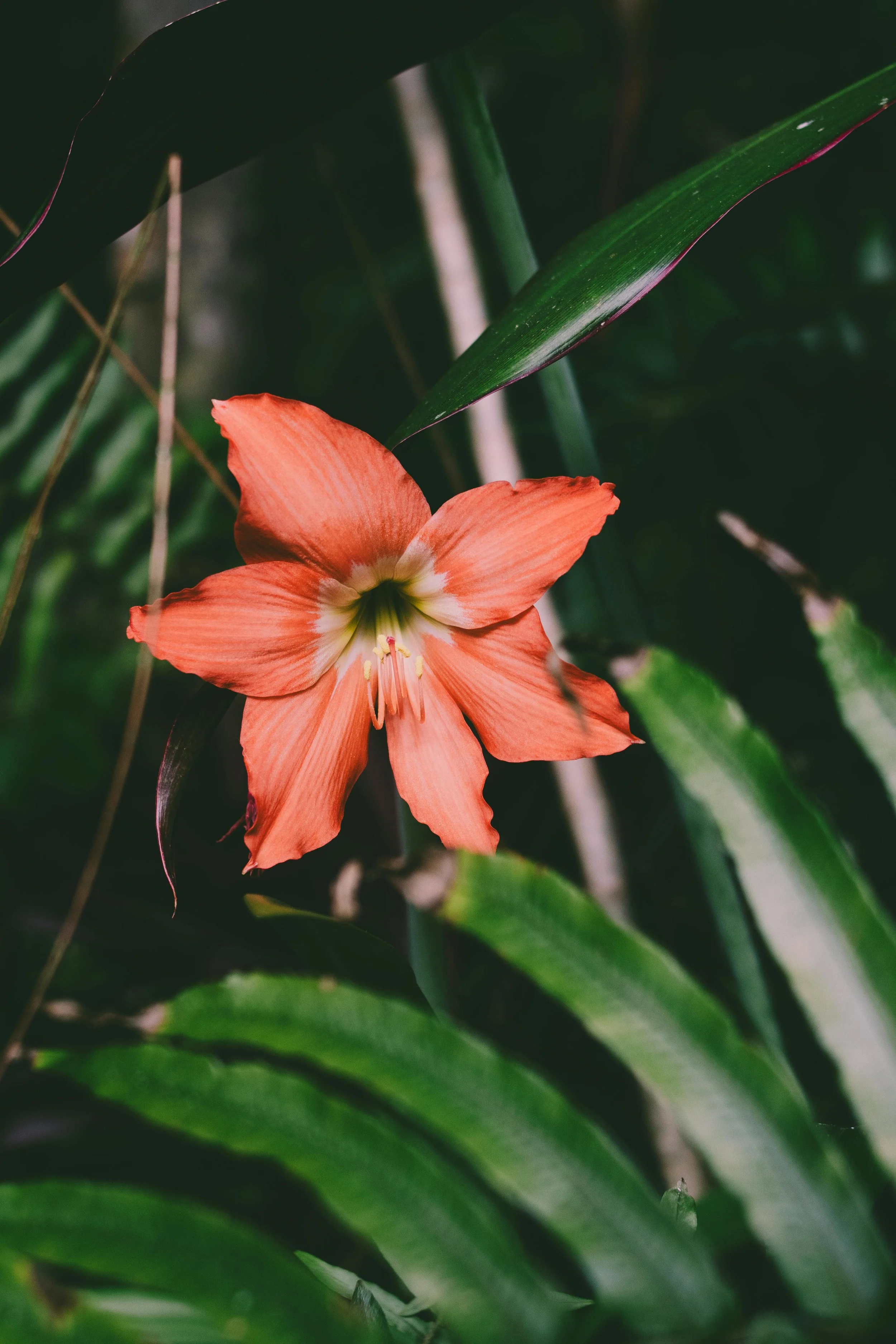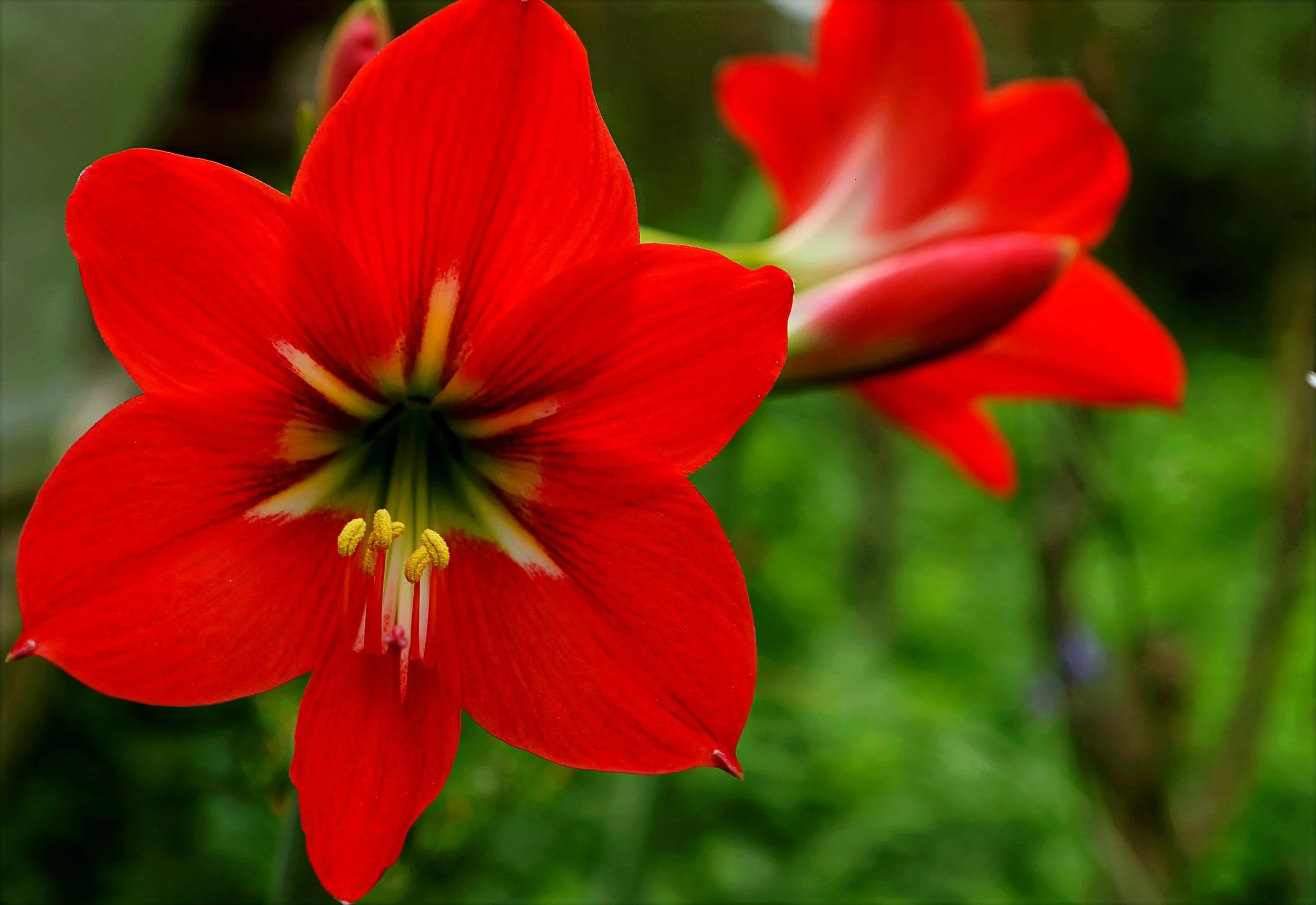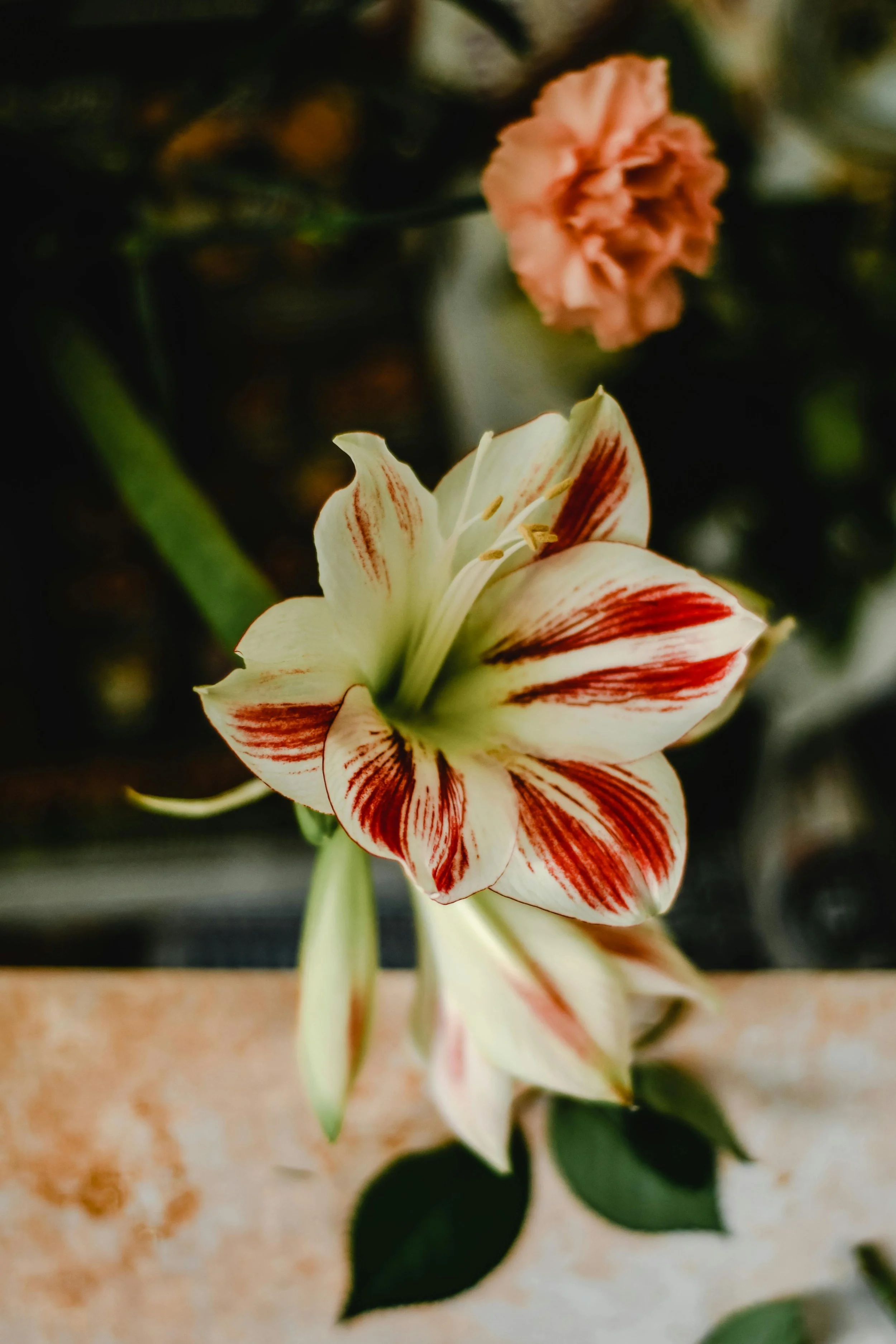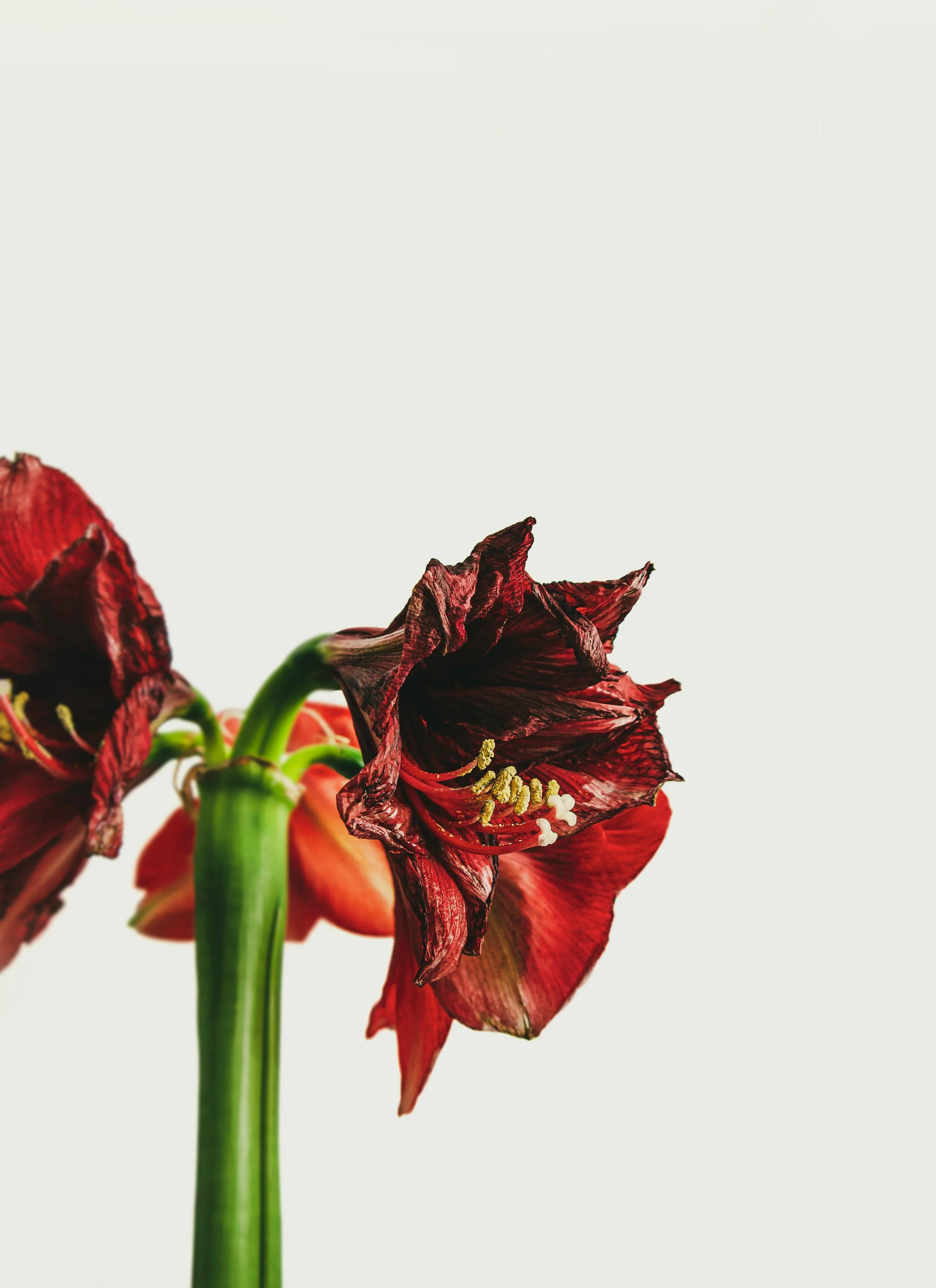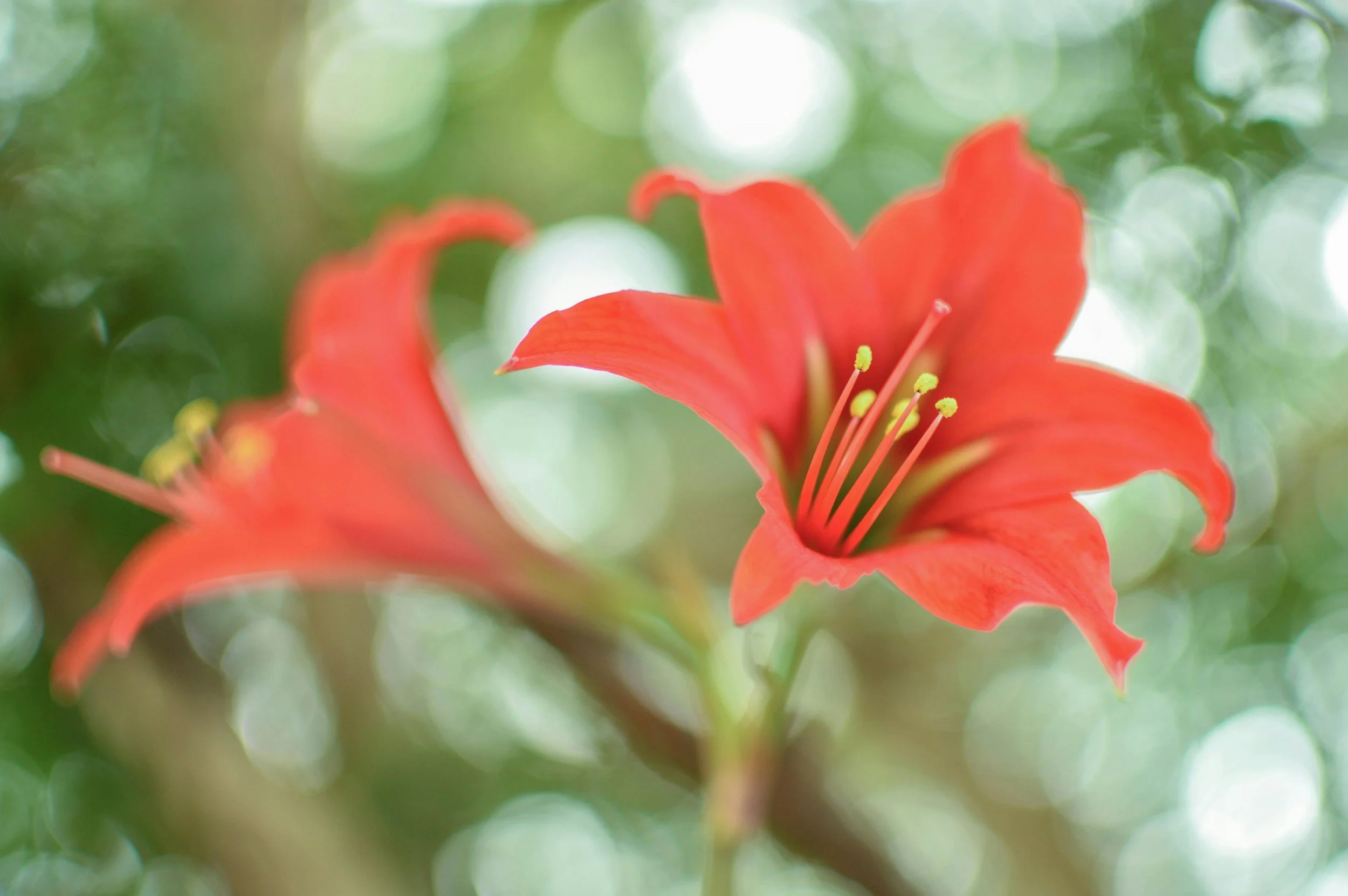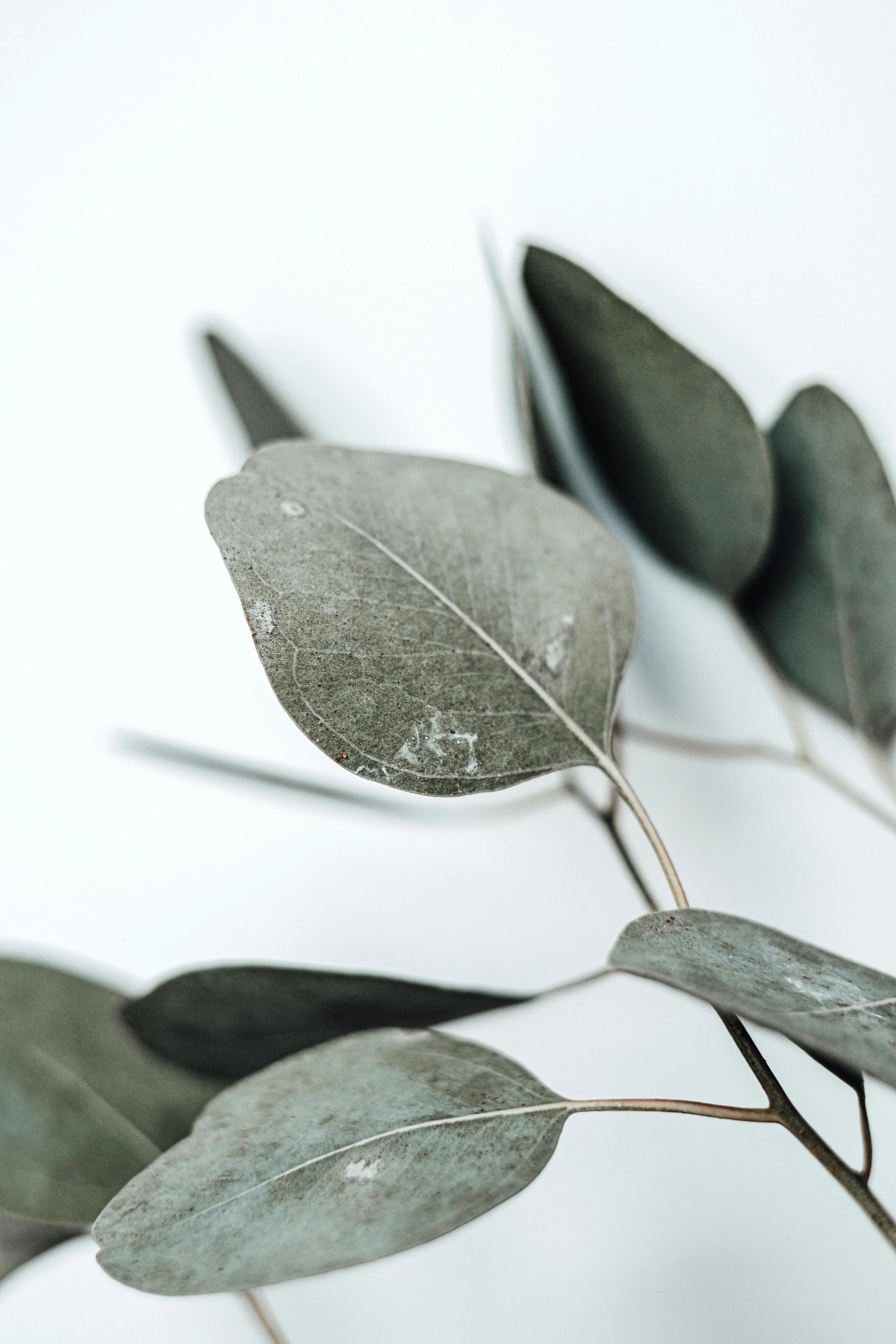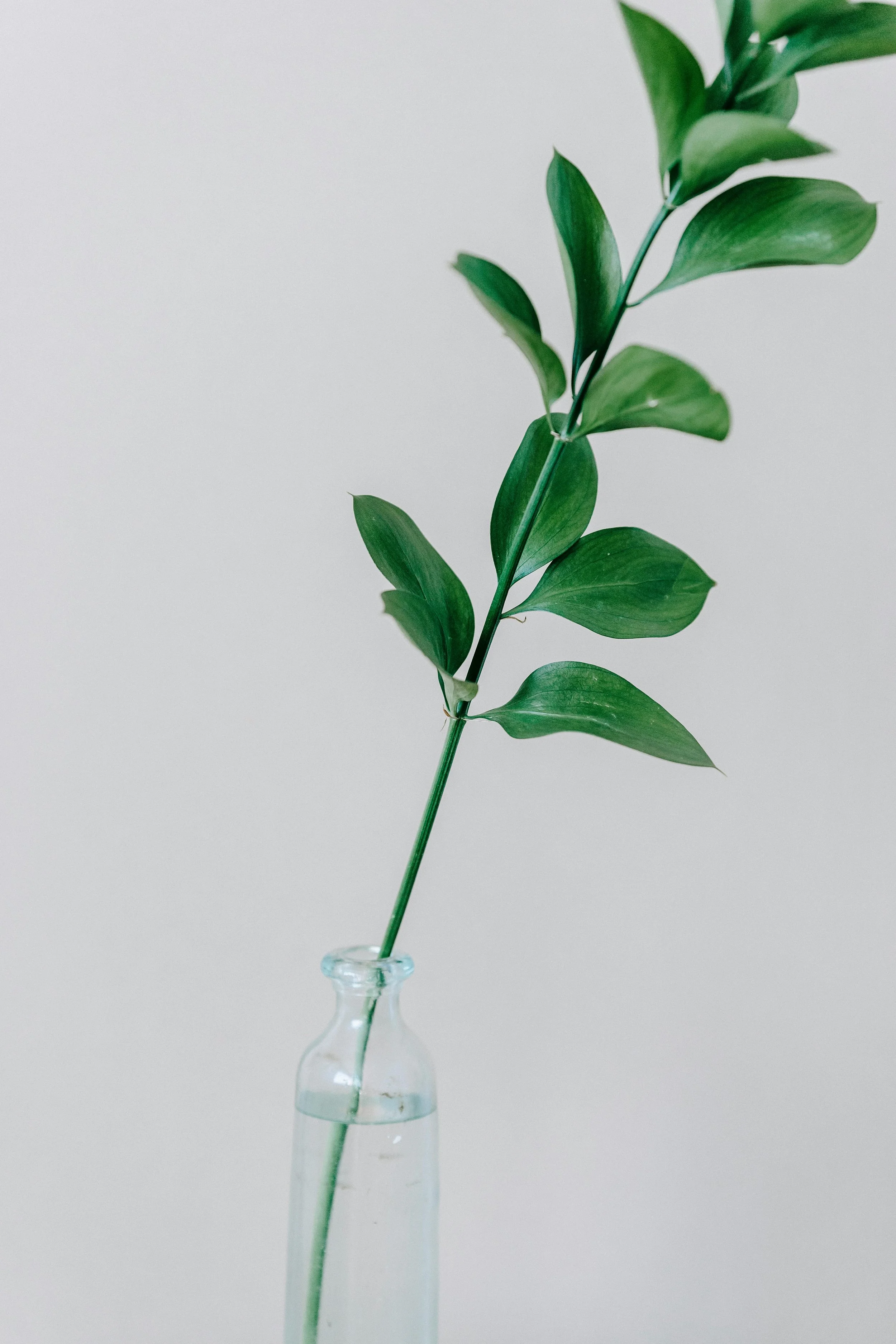THE AMARYLLIS— no. 003 —
The Amaryllis is a true showstopper, known for its bold beauty and striking presence. Its large, trumpet-shaped blooms command attention, making it a favorite among flower lovers for its elegance and showy, dramatic flair. This floral guide dives into the fascinating world of the Amaryllis, from seasonality and characteristics, to pretty pairings and care tips — plus a bouquet recipe featuring this gorgeous bloom. To learn more, keep reading!
SEASONALITYNative to South America, these tropical flowers thrive in warm temperatures and grow best in full sun or with partial shade. In colder climates, they are typically grown indoors, in bright, indirect light. The typical blooming season for Amaryllis flowers is late fall through winter, making it a favorite for holiday arrangements and seasonal decor. Amaryllis works really well in cut flower arrangements, and is often paired with greenery like pine, eucalyptus, or holly for a fresh yet festive feel.
FEATURESAmaryllis are known for their large, showy trumpet-shaped blooms. Each bulb produces 1–3 stalks, each carrying 2–6 blooms that grow atop tall, sturdy stems. Amaryllis flowers ooze main character energy, bringing bold elegance and striking sophistication to any arrangement.
DESIGNDue to their impressive size and striking appearance, Amaryllis are typically used as focal flowers in arrangements. Their large, bold blooms command attention and can easily be the show stopping centerpiece of a design. Their strong stems and vertical lines also make them suitable as line flowers in some cases. Standing tall, they provide structure and add height and drama to floral designs.
Amaryllis' elegant form lends itself well to modern and romantic styles beautifully. In modern designs, their bold colors and clean lines create a striking contrast when paired with sleek, structural greenery or simple filler flowers. In romantic arrangements, their soft hues and velvety texture add a touch of luxury, while its bold blooms blend beautifully with soft, ruffled flowers and loose greenery. And don't forget — Amaryllis is a gorgeous choice for holiday-themed arrangements, thanks to its seasonal availability and red and white color palette!
DID YOU KNOW?Amaryllis is a favorite for floral arrangements due to its bold and dramatic blooms, but please be aware — if ingested, it can cause upset stomachs and other symptoms. The bulb contains lycorine, an element that can be unsafe for both people and pets. While Amaryllis toxicity is rarely life-threatening, it’s important to use an abundance of caution to avoid accidental ingestion.
To use Amaryllis safely, here are a few tips: keep arrangements out of reach of pets and small children, handle stems carefully to avoid sap, ensure flowers and trimmings are fully disposed of, and wash your hands thoroughly after handling. Avoid including Amaryllis in arrangements near food to prevent accidental exposure.
CARETo keep Amaryllis flowers fresh in a cut flower arrangement, trim the stems at a slight angle under running water before placing them in a clean vase with fresh, cool water. Because they are hardy flowers, Amaryllis stems are generally sturdy but can be hollow and prone to bending, especially when the flowers are fully open. Be sure to handle them with care to avoid breaking or bruising the stems. Change their water every 2–3 days and re-trim the stems to maximize hydration. Ensure the vase is tall enough to support the heavy blooms, as the hollow stems can sometimes bend under the weight of the flowers.
Amaryllis has an excellent vase life, typically lasting 7–10 days. As the blooms are hardy, they tolerate handling well, but avoid excessive touching as the petals are delicate and prone to bruising. Place arrangements away from direct sunlight, heat sources, or drafts to extend their longevity. And remember (!), Amaryllis stems can secrete a sap that irritates the skin and is toxic to pets, so keep them out of reach of animals and small children.
PAIRINGSThe bold Amaryllis pairs beautifully with flowers that complement its shape and texture — without competing for attention. Here are a few other lovely companions to consider for your Amaryllis!
RECIPELet's create a serene bouquet with the softness and sparkle of a snowy winter day! Imagine a white ceramic vase filled with crisp whites and lush green accents, creating a sense of calm and wonder.
3 stems of Amaryllis
5 stems of Roses
10 stems of Snapdragons
10 stems of Lisianthus
5 stems of Eucalyptus
5 stems of Ruscus
Start by placing the Eucalyptus and Ruscus around the edges of the vase to create a framework and add height. Add the Amaryllis as focal points, spacing them evenly throughout the arrangement. Fill in with Roses, creating clusters of soft texture. Tuck in Snapdragon and Lisianthus, varying their heights to add dimension. Step back and adjust as needed to create a balanced and harmonious design. Et voilà — your wonderful, wintertime arrangement with Amaryllis!
RESOURCESWith their dramatic, trumpet-shaped blooms and vibrant, velvety petals, Amaryllis flowers are a stunning study and there's a tremendous amount to learn about these striking flowers. Dive deeper into their beauty, symbolism, and how to incorporate them into your arrangements by exploring these incredible resources below!
-
FLOWER MAGAZINE
-
FLOWER MAGAZINE
-
BETTER HOMES & GARDENS
THANK YOU FOR VISITING!It means the world to me that you’ve spent a little time here on Moss Rose Lane. I hope this Amaryllis Floral Style Guide was interesting and informative, and that next time you’re at your local farmer’s market or flower market, you’ll be inspired to bring home a bunch of these beautiful blooms. See you next week — the journey in flowers continues!
With love,
RACHELPS: Be sure to follow Moss Rose Lane on Pinterest and subscribe to “This Week” (the newsletter!) for weekly flower inspiration, design ideas, floral recipes, and more.


